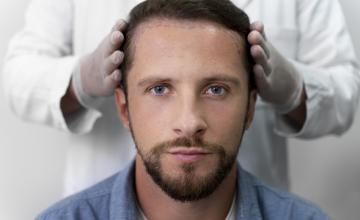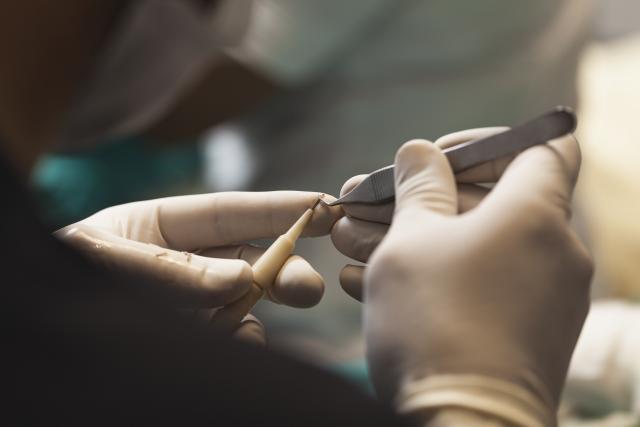Folexen (S-equol)

 A Viable Alternative to Propecia in Treating Hair Loss?
A Viable Alternative to Propecia in Treating Hair Loss?
Folexen S-equol , produced by Australian manufacturer Eclipse Nutraceuticals is considered an "all natural" hair loss treatment that boasts an impressive 87% success rate for preventing and reversing the effects of male pattern baldness with virtually no side effects. Folexen S-equol has also been a hot topic of discussion on our popular hair loss forum. But, does this self-described "nutraceutical" live up to its hair growth hype? Is Folexen a viable alternative to Propecia for treating the effects of male pattern baldness?
What is Folexen S-equol?
According to the FAQ on Folexen's website, the active ingredient S-equol is "a metabolite of a natural isoflavone called daidzein, which occurs in soybeans and some other food products".
Isoflavones are an organic compound produced almost exclusively by various bean types. In populations that consume large quantities of soy protein, studies have shown a lower incidence of breast cancer and other common cancers because of its role in influencing sex hormone metabolism and biological activity.
As a metabolite, S-equol is the product that remains after the isoflavone is broken down or "metabolized" by the body.
In addition to its active ingredient, Folexen contains the following GRAS (generally recognized as safe) inactive ingredients: starch, maltodextrin, allantoin, propionic acid. It may also contain hypromellose (vegetarian capsule).
But is there any evidence that S-equol works to treat hair loss?
How Folexen S-equol Allegedly Works to Treat Baldness
In the body, testosterone is converted to the hormone dihydrotestosterone (DHT) via the enzyme 5-alpha-reductase (5AR). It's widely known that androgenic alopecia (genetic hair loss) results when genetically vulnerable hair follicles are exposed to DHT which then binds to the receptor sites of these follicles causing them to weaken and shrink over time. This shrinking process is known as miniaturization.
The recognized leader in the battle against the balding effects of DHT is the clinically proven and FDA approved drug Propecia (finasteride). Propecia works by inhibiting the conversion of testosterone to DHT, potentially slowing or even reversing the effects of androgenic alopecia. However, approximately 2% of males who take Propecia experience debilitating sexual side effects.
Unlike finasteride, Folexen's rumored ability to suppress hair loss and potentially regrow hair is based on the theory that S-equol can bind strongly to free DHT molecules, prohibiting them from binding to the hair follicles' receptor sites. Because Folexen does not suppress the conversion of testosterone to DHT, there is no resulting increase of testosterone in the body and therefore, no sexual side effects. But are there any clinical studies supporting that S-equol can truly prevent DHT from binding to hair follicle receptor sites and prevent hair loss?
Clinical Studies
Folexen's website references four articles in peer reviewed journals. Two of these studies center on S-equol's effect on prostate health while the other two don't appear to reference S-equol at all.
At this time, there appears to be no scientific data presented supporting Folexen's efficacy as a hair loss treatment.
Side Effects
The company claims that the product is virtually side effect free: specifically noting that it does not cause gynecomastia (enlarged breasts), erectile dysfunction or any of the other side effects that are experienced with some other treatments.
Some users however, did report mild diarrhea that dissipated within one week of commencing treatment.
What is the Recommended Dosage?
The recommended dosage of Folexen is 4 capsules per day (two every 12 hours), totaling 10mg of the active ingredient. Eclipse claims that the product has been tested safe at much higher concentrations (up to hundreds of milligrams) and there is some speculation based on available data that it may, in fact, require a dose as high as 100mg to match the Propecia's hair growth results.
Where to Buy Folexen S-equol
Folexen is only available by mail order from Australia. A bottle of 100 2.5mg capsules (25 day supply) costs approximately $40 USD + shipping but there is a discount for purchases exceeding 4 bottles and again for 9+ bottles. However, it's easy to see that even in bulk this treatment is several times more expensive than purchasing generic 5mg finasteride and quartering the tablet, as many finasteride users do.
As a natural product and not a drug, there are no shipping restrictions. Estimated delivery time is two weeks.
Conclusion
Time will tell if Folexen S-equol proves to be an effective weapon in the fight against androgenic alopecia or simply another product in a long line of expensive disappointments.

 Para-Aminobenzoic Acid (PABA) has been called the anti-gray hair vitamin and is considered one of the lesser known members of the vitamin B complex family (despite the fact that it’s not really a vitamin at all). PABA is a non-protein amino acid and isn’t essential in the human body. It can be found in foods such as liver, whole grain, yeast, and kidney and is listed as an active ingredient in several popular herbal hair loss treatments such as
Para-Aminobenzoic Acid (PABA) has been called the anti-gray hair vitamin and is considered one of the lesser known members of the vitamin B complex family (despite the fact that it’s not really a vitamin at all). PABA is a non-protein amino acid and isn’t essential in the human body. It can be found in foods such as liver, whole grain, yeast, and kidney and is listed as an active ingredient in several popular herbal hair loss treatments such as 









 The new and revolutionary Revita Shampoo has all the right stuff to stop DHT and promote healthy hair growth. Revita contains the proven DHT inhibitor
The new and revolutionary Revita Shampoo has all the right stuff to stop DHT and promote healthy hair growth. Revita contains the proven DHT inhibitor 